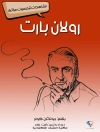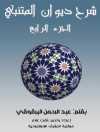From the hard-boiled detective stories of Dashiell Hammett to the novels of Claude Mc Kay, The Word on the Streets examines a group of writers whose experimentation with the vernacular argues for a rethinking of American modernism—one that cuts across traditional boundaries of class, race, and ethnicity.
The dawn of the modernist era witnessed a transformation of popular writing that demonstrated an experimental practice rooted in the language of the streets. Emerging alongside more recognized strands of literary modernism, the vernacular modernism these writers exhibited lays bare the aesthetic experiments inherent in American working-class and ethnic language, forging an alternative pathway for American modernist practice.
Brooks Hefner shows how writers across a variety of popular genres—from Gertrude Stein and William Faulkner to humorist Anita Loos and ethnic memoirist Anzia Yezierska—employed street slang to mount their own critique of genteel realism and its classist emphasis on dialect hierarchies, the result of which was a form of American experimental writing that resonated powerfully across the American cultural landscape of the 1910s and 1920s.
قائمة المحتويات
Introduction: Toward a Theory of Vernacular Modernism
1. ‘The Steady Reaching Out for New and Vivid Forms’: H. L. Mencken and the American Revolution of the Word
2. ‘Never mind the comical stuff… They ain’t no joke about this!’: Ring Lardner, Anita Loos, and the Comic Orgins of Vernacular Modernism
3. ‘I didn’t understand the words, but my voice was like dynamite’: Anzia Yezierska, Mike Gold, and the Jewish-American Break with Realism
4. ‘Say It With Lead’: Carroll John Daly, Dashiell Hammett, and Modernism’s Underworld Vernacular
5. ‘The Necromancy of Language’: Realist Uplift and Urban Vernacular in Rudolph Fisher and Claude Mc Kay
Conclusion: Modernism’s Familial Relations
عن المؤلف
Brooks E. Hefner is Associate Professor of English at James Madison University.












